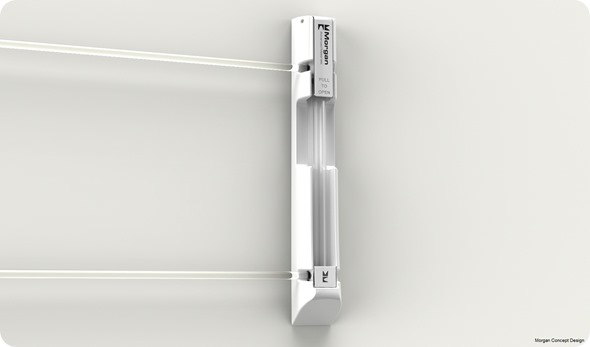May 27 2016
Morgan Advanced Materials, a global specialist in the development and manufacture of ultrasonic sensors and transducers, is developing a new non-contact ultrasonic flow sensor which is typically five times more accurate at low flow rates than other ultrasonic sensors available in the medical and laboratory sectors.

The new range delivers highly reliable accuracies of +/-5% on flow rates as low as 2ml/min in a variety of fluids including blood, saline and buffer solutions with similar performance at higher flow rates of up to 500ml/min, making the sensors ideal for dialysis and blood apheresis applications.
The products feature an ultrasonic transducer at either end of a disposable flow tube to accurately calculate flow rates using the ‘time of flight’ method. The sensors have been specifically designed to have very low zero flow offset which greatly reduces their systematic error rate, meaning they may only require factory calibration.
The low-cost disposable flow tube has been optimized to minimize turbulent flow, while the sensors do not come into contact with the fluid. This makes them ideal for environments where accurate flow measurement and the sterilization of equipment are both key drivers.
Dialysis is one such application, where the flow of blood can be accurately measured to optimize treatment plans, reduce the time patients spend in hospital and improve their overall quality of life.
There are many medical and laboratory applications where the flow of liquids needs to be accurately measured, but where the physical presence of a sensor could contaminate the fluid.
“By working in conjunction with influencers within the medical and laboratory sectors, we have been able to leverage our expertise in the field of ultrasonics to create a sensor that is easy to install and operate, requires no sterilization and is typically five times more accurate at low flow rates than competing ultrasonic products, while still being competitively priced.”
Martin Murawiecki, Product Engineer at Morgan Advanced Materials.
The ‘time of flight’ method of measuring flow rates refers to the use of two ultrasonic transducers which act as both a transmitter and receiver of sound energy. The difference in time it takes the sound energy to travel between the two sensors (through the blood or other liquid) directly and exactly relates to the velocity of the fluid in the disposable flow tube, giving a highly accurate recording of the flow rate. Morgan’s flow sensor records the flow rate values up to nine times per second, allowing the sensors to react extremely quickly and accurately to any changes in the flow rate.
Martin Murawiecki adds: “For the medical and laboratory sectors, having an ultrasonic flow sensor which not only dramatically improves the accuracy of flow rate measurements, but also upholds strict contamination procedures by not coming into contact with the fluid, is of enormous benefit. This facilitates more precise treatment of patients while, through the use of disposable and non-contact components, time is reduced during the sterilization process.”
Source: Morgan Advanced Materials